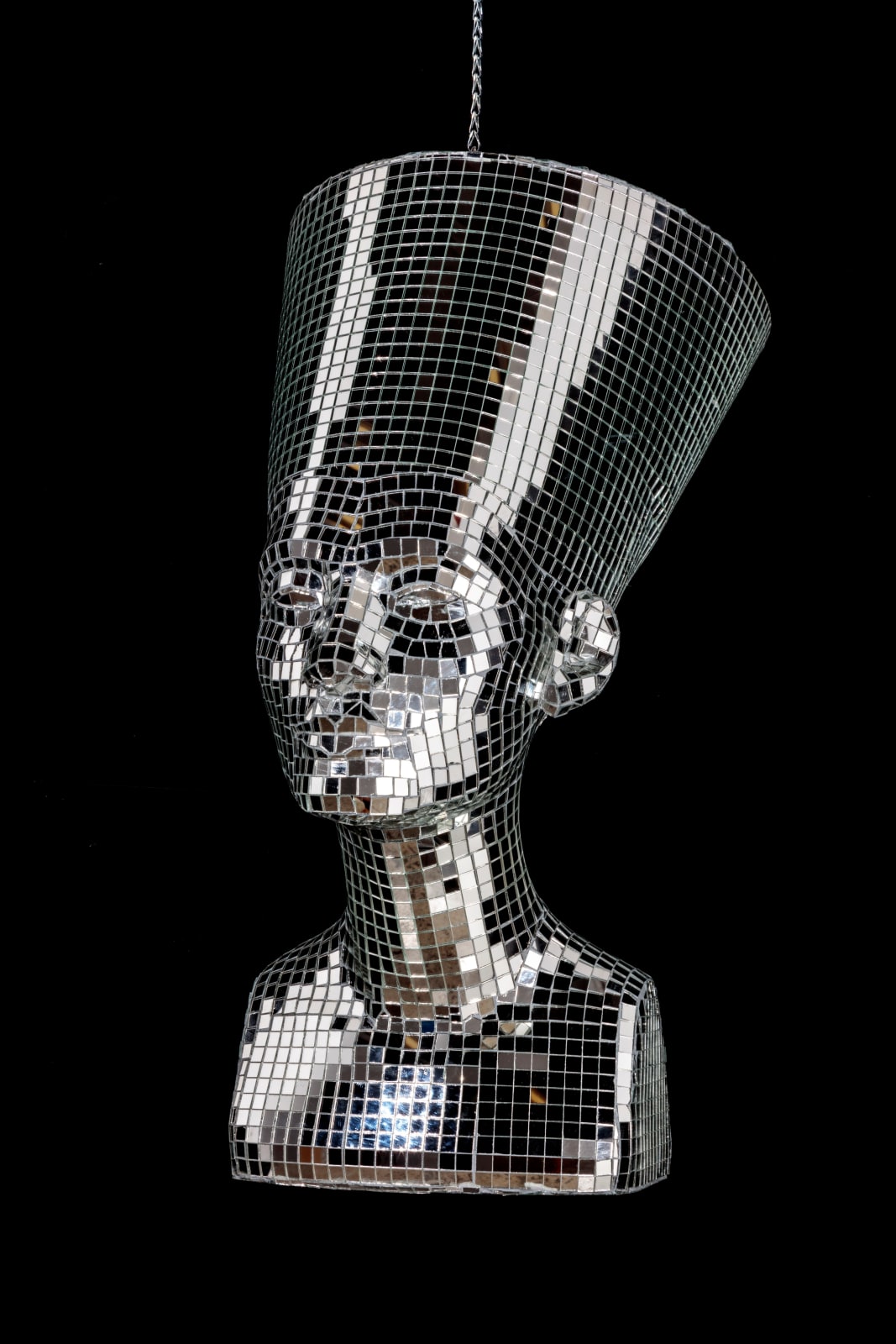

Awol Erizku Ethiopian-American, 1988
Nefertiti - Miles Davis, 2017
Hard coated foam and mirror tile
c. 76.2 x 38.1 x 58.4 cm. (30 x 15 x 23 in.)
Edition of 3 + 2 AP
Copyright The Artist
Awol Erizku’s Nefertiti – Miles Davis (2017) reimagines the iconic bust of Nefertiti in dazzling disco ball materials, an inspired synthesis of antiquity and modernity. Suspended in space, the piece...
Awol Erizku’s Nefertiti – Miles Davis (2017) reimagines the iconic bust of Nefertiti in dazzling disco ball materials, an inspired synthesis of antiquity and modernity. Suspended in space, the piece mesmerises as it spins, refracting light like a cosmic celebration of the Queen’s legacy. Here, Nefertiti is no longer encased behind glass, a relic of colonial plunder, but liberated – resplendent, sovereign, and untouchable.
With characteristic ingenuity, Erizku juxtaposes Nefertiti’s timeless elegance with materials synonymous with nightlife and exuberance, transforming her into a beacon of contemporary cultural resonance. This shimmering reinterpretation dares to confront the dualities within her image: beauty and brutality, power and oppression, adoration and exploitation.
Nefertiti emerges as a recurring muse throughout Erizku’s oeuvre, her visage an emblem of defiance against the contested legacy of cultural displacement. The artist’s fascination stems from the turbulent history of the bust discovered in Amarna in 1912, smuggled to Berlin, and enshrined in the Neues Museum – a paragon of aesthetic perfection in Western art history, yet a stark symbol of colonial theft.
Erizku’s Nefertiti – Miles Davis operates within this complex framework, inviting viewers to reflect on the violent undercurrents of cultural appropriation. By recontextualising the ancient queen with dazzlingly contemporary flair, he not only reclaims her from the narratives imposed by colonial powers but also situates her firmly in the present, a dazzling icon of resilience and reclamation.
Much like Miles Davis, whose genius constantly redefined the boundaries of music, Erizku transforms Nefertiti into a striking allegory of creative reinvention – bold, unapologetic, and utterly magnetic. In Erizku’s hands, she is no longer a vestige of the past but a vision of the future, shimmering defiantly in her own light.
With characteristic ingenuity, Erizku juxtaposes Nefertiti’s timeless elegance with materials synonymous with nightlife and exuberance, transforming her into a beacon of contemporary cultural resonance. This shimmering reinterpretation dares to confront the dualities within her image: beauty and brutality, power and oppression, adoration and exploitation.
Nefertiti emerges as a recurring muse throughout Erizku’s oeuvre, her visage an emblem of defiance against the contested legacy of cultural displacement. The artist’s fascination stems from the turbulent history of the bust discovered in Amarna in 1912, smuggled to Berlin, and enshrined in the Neues Museum – a paragon of aesthetic perfection in Western art history, yet a stark symbol of colonial theft.
Erizku’s Nefertiti – Miles Davis operates within this complex framework, inviting viewers to reflect on the violent undercurrents of cultural appropriation. By recontextualising the ancient queen with dazzlingly contemporary flair, he not only reclaims her from the narratives imposed by colonial powers but also situates her firmly in the present, a dazzling icon of resilience and reclamation.
Much like Miles Davis, whose genius constantly redefined the boundaries of music, Erizku transforms Nefertiti into a striking allegory of creative reinvention – bold, unapologetic, and utterly magnetic. In Erizku’s hands, she is no longer a vestige of the past but a vision of the future, shimmering defiantly in her own light.

